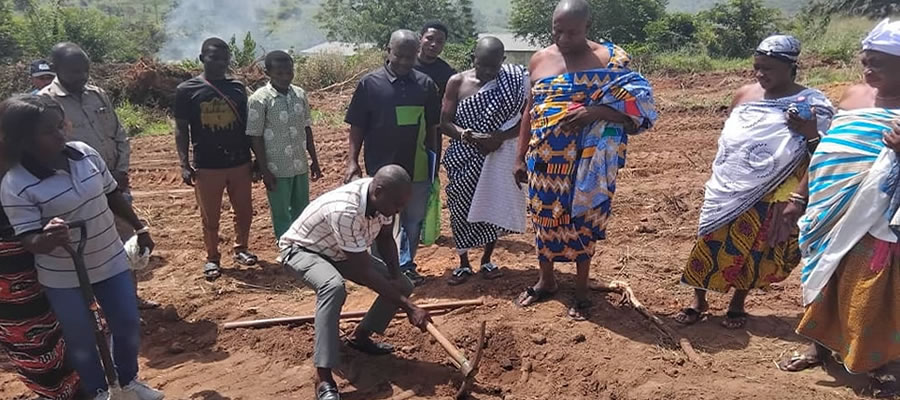

Relevant Data
Location and Size
Sekyere Central District, which is one of the thirty (30) administrative districts in the Ashanti Region of Ghana, it is located on the northern part of the region, and shares boundaries with Mampong Municipal, Atebubu District, Sekyere East, Sekyere South, and EjuraSekyeredumasi.
The land size of the District is 1,631.1 sq. km and it is located within longitudes 0.05 degrees and 1.30 degrees west and latitudes 6.55 degrees and 7.30 degrees north. It has about 150 settlements with about 70 percent being rural. The rural areas are mostly found in the Afram Plains portion of the District where communities with less than fifty (50) people are largely located.
Climate
The District has two rainy seasons with an average annual rainfall of 1270mm. The major rainy season starts in April, with a major peak in May. There is a slight dip in July and a pick in August, tapering off in November. December to February is dry, hot, and dusty. The average temperature in the District is about 27 degrees Celsius with variations in mean monthly temperature ranging between 22 degrees to 30 degrees Celsius throughout the year.
Vegetation
The District lies within the wet semi-equatorial forest zone. Due to human activities and bushfire, the forest vegetation of parts of the District, particularly the north-eastern part, has been reduced to savannah. The vegetation of the area has been reduced from its original rain forest of the moist semi-deciduous type in most areas to secondary forest as a result of human activities like tree felling and farming. Vegetation of primary origin can only be found within a reserve known as the Kogyae Nature Forest Reserve, which has a total land area of 115 square kilometers. The forest was created mainly for:
? preserving the timber and wildlife resources
? preserving the climate of the area
? checking soil erosion
? protecting water resources
Hunting, felling of trees and other human activities are, therefore, not allowed in the forest reserves.The vegetation of the District is fast becoming degraded. The forest and farmlands have been destroyed due to cutting of trees for charcoal production, poor farming practices, timber operations, and bush fires. The total forest reserve in the District in 1990 was 782.0km2. As the rate of decrease in the forest falls between 3 percent and 10 percent with an average of 7 percent per year for the past ten (10) years, the District is now left with about 161.07 square kilometers forest reserves and 78.20 square kilometers of reserves. Many rivers in the District are drying up because of the high rate of deforestation and the
depletion of economic trees and wildlife. Similarly, the areas, which used to be the main source of food supply in the District are currently experiencing falling trend in food production due to destruction of farmlands. Again, large quantities of economic trees and medicinal herbs are cut for charcoal production resulting in loss of flora and fauna and the District is also prone to bush fires due to unprofessional method of charcoal burning.
Date Created : 12/4/2017 7:58:48 AM












 facebook
facebook
 twitter
twitter
 Youtube
Youtube
 +233 593 831 280
+233 593 831 280 0800 430 430
0800 430 430 GPS: GE-231-4383
GPS: GE-231-4383 info@ghanadistricts.com
info@ghanadistricts.com Box GP1044, Accra, Ghana
Box GP1044, Accra, Ghana